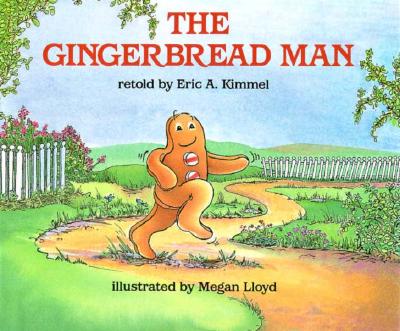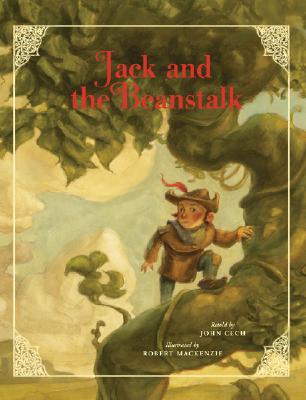Now imagine a generation of children who largely don't hear these tales. Hard to do? Look around you.
As a librarian, I hear it all. There was the preschool teacher who came in looking for a version of "Little Red Riding Hood" where the grandmother doesn't get eaten. I started to show her versions where both Little Red and the grandmother survive perfectly intact from the wolf's belly. But no, that's "too scary," and didn't I have one where no one gets eaten?
Now, I suppose there may be versions out there where dear old granny gets shoved into a closet, or has miraculously left on a cruise to the Bahamas. And maybe these are even good children's picture books. But I've never seen them, and frankly, I have to ask what the point of the story is if no one gets eaten at any point?
Of course, as a librarian, I was willing to do the research, but the teacher was absolutely shocked that I would consider giving her the other ones and left saying that she had decided it wasn't a good story for children.
This is not an isolated incident, just the one which I always think of when this topic comes up. (Although I did hear from a nanny the other day that the last nanny working for that family was practically fired for reading the kids "Hansel and Gretel" because it was a book about child abandonment.) So now we are raising a generation who are largely not hearing these stories because of their "disturbing" or "violent" content. And that means these kids will not have the background for later literary and cultural references. I first encountered this about 5 years ago when I watched a librarian try to read a funny book to second graders that hinged on knowing basic Mother Goose Nursery Rhymes, and they just didn't understand. She had to stop and go over the nursery rhymes that few of these kids had ever heard.
Now, I am not suggesting that this is the first time that stories have been tempered to better suit childhood sensibilities. Think back to "Little Red Riding Hood." How did it end when you heard it as a child? Did Little Red get eaten and that was the end of it? Did she and her grandmother get rescued by a passing woodsman? What then happened to the wolf? Did he slink off? Did his belly get filled with stones? Certainly you never heard the versions that were sexual in nature, or cannibalistic, or involved bodily functions when you were a child?
Obviously, I now know a great many versions of that story, and I cannot remember how it went when I first heard it. I know that I did not come across the Grimm version with the stones in the wolf's belly until I saw Stephen Sondheim's musical "Into The Woods." But that is all I can tell you. Was the girl dead at first, or was she alone rescued, or both her and her grandmother? I don't know, but I certainly loved the story and got the point about strangers being dangerous. And I wasn't traumatized.
I think these stories are essential to sparking a young child's imagination. And if they are not getting them through their parents, then I make sure they get them from me in the library storytimes. And generally the children love these stories and songs (although the kids themselves were fairly upset by hearing "Three Blind Mice" for the first time, which surprised me, and leaves me wondering how to deal with that), despite parents' initial reservations. And once the parents see the kids enjoying the story and not being traumatized by it (and because it is a professional pushing it) they tend to relax and get into it. And sometimes take out other versions of the story to read at home. Then I feel like I've done my duty to these kids.
And I don't leave out the "scary bits" of stories. But at the young ages that I deal with (ages 2-5 in preschool storytime), it is best for the stories to have happy endings. Granny and Little Red will always be rescued for this crowd. But they do get eaten.
One of my favorites for this purpose is The Gingerbread Man retold by Eric Kimmel and illustrated by Megan Lloyd:

The story stays intact, all the way through the fox eating up the gingerbread man at the end in the river. But it tempers that afterwards by saying that you never know whether the gingerbread man might rise again the next time you bake gingerbread.
One story I have had issues with in the past is "Jack and the Beanstalk." It's a great story to catch the imagination. But it's way too long for group storytime at this age. I have looked and looked for shorter versions I like which would work, and I always have to compromise. I find one with decent text, but then it leaves out the rhyme, and I have to put it back in. It's just not the same story without the rhyme. I've tried a number of times, but either they change integral aspects of the story, lose the danger element and so on and so forth. (One version had Jack and the giant wind up eating pancakes together, if I remember correctly.)
And that rhyme has always been delicious and evocative for me. And I find that many people don't know the full four lines:
"Fe, Fi, Fo, Fum
I smell the blood of an Englishman.
Be he alive, or be he dead
I'll grind his bones to make my bread!"
And yes, I've used that with children, much to their parents' surprise and sometimes consternation. But again, they have always seemed appreciative in the end, and I've never had a complaint.
So, imagine my surprise when I stumbled upon a recent picture book which changes the story and the rhyme, and I actually like it!
(Full disclosure: this book was written by the father of one of the mangers at my library, though I did not know that when I found it, nor does she know about this blog at the time of this writing.)
Author John Cech and illustrator Robert Mackenzie have put out a beautiful new version of Jack and the Beanstalk:

The language is somewhat simpler than one tends to find in a literary fairytale, but the word-images are evocative: "At the top of the beanstalk, he found a country like none he had ever seen before. Everything was much, much bigger - the grass came up to his knees, and the butterflies were as big as birds." It reads much more like oral storytelling, and includes wonderful words like "scampered" and "devoured." It should make a wonderful read aloud.
But what of the story and the rhyme? Well, the mother in this version is very loving, and it is Jack who chooses to keep going back up the beanstalk - when the goose flies away, and the magical sack is stolen. And the scary bits are still there, with Jack hiding in the giant's house while he tears it apart looking for him. The rhyme I actually like for this younger age. It gets the point across in less bloody and brutal language while still being memorable:
"Fee Fi Fo Fum,
I smell a visitor, yum, yum, yum.
Fish or fowl, cold or hot,
We'll cook him up inside my pot."
The ending has been changed so that no one dies, but it doesn't actually hurt the story. The giant's wife (in this version the size of a regular human) is tired of her life of servitude and goes down the beanstalk with Jack at the end. And they do get chased by the giant, and Jack does chop down the beanstalk. But the giant well, he wants to chase them down the beanstalk:
But he was frozen to the spot. You see, the giant was not afraid of many things, but he was afraid of heights. So he did what giants do. He bellowed and bellowed and bellowed. And he shook all the beans off the beanstalk. He almost shook off his wife and Jack as well, but they hung on for dear life."
So there is danger, but it's slightly safer danger. Like Little Red and Granny being rescued. I don't feel that it's wrong to temper stories for young children if you keep the core intact. What I find a damn shame is not telling them these stories at all out of some misguided fear that you will scar them for life. Their little imaginations are thirsty for these images. Feed their minds, please!
-------------------------------------------
This entry is cross-posted here at Dreamwidth.




1 comment:
Y'know, so many of the original Hans Christian Andersen and Grimm Brothers stories are just plain scary; there's no way around it! Eh, maybe if Disney makes feel-good movies out of all them, kids will know about them. I know--that's just depressing. :)
Post a Comment